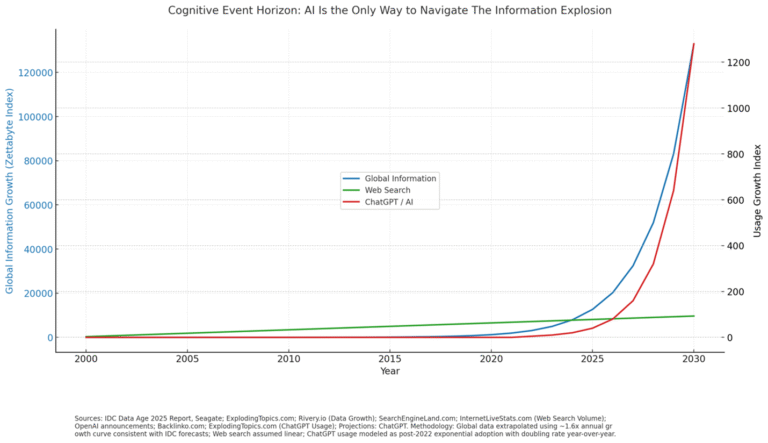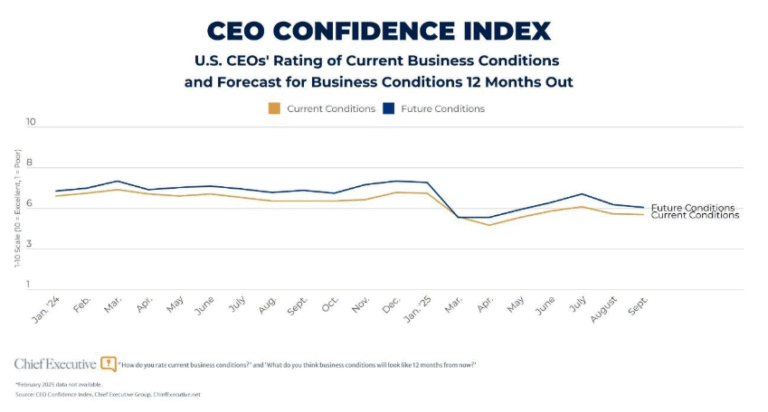
CEOs who view information technology as a necessary but peripheral part of running a company run a serious risk of becoming obsolete, yet this mindset remains surprisingly prevalent despite an increased imperative to change.
The power of digital transformation is clearest in permanent alterations to the customer-seller relationship. For decades, customers navigated sharply limited choices. They bought what retailers offered on shelves and catalogs and watched television on network schedules. They absorbed mass-media advertising with a fixed, uniform message. Vendors struggled to intuit what the customer wanted, through data and an indistinct blend of art and science.
Now consumer interaction and buying trends are evolving at a furious pace. The 21st-century consumer expects a multi-dimensional, bi-directional relationship with her brands; relevant, timely, coordinated interactions, where the brand doesn’t forget what happened last time; and frictionless transactions.
Revenue growth for many companies will depend on their ability to understand their customers, at a personal level, predict what that customer wants and when and give the customer a frictionless way to interact that makes sense for that specific customer. The most forward-thinking business leaders understand that embracing technology and processes that further this goal means higher revenue, profits and a clear competitive edge.
Comprehensive technological adaptation refines the customer connection and surpasses even the most successful business leaders of the pre-digital era. This doesn’t mean turning company leadership over to computer systems, but instead having leadership that embraces technology and understands how to use it to compete.
For example, the CEO of yesterday discussed results generated after month end with the executive team about what went right and wrong and plans for the next month. The digitally attuned CEO operates with real-time comprehensive global information, understands what is happening as it is happening, and acts accordingly.
The bottom line is that customer management never stops for digitally-attuned companies and leaders. Data-driven recommendations deliver results—but only in proportion to how a business develops a feedback loop with rigorous compliance and enforcement measures. The CEO needs to ensure that his or her company’s analytical insights are reaching every company function affecting customers. Performance and financial returns must be constantly analyzed to continue the ongoing process of digital transformation.
These transitions aren’t easy, and CEOs today are undertaking them with different levels of success. Those that have established highly integrated teams that bring together business, finance and technology will be able to make the proper technology investments—and outperform the competition.




Chief Executive Group exists to improve the performance of U.S. CEOs, senior executives and public-company directors, helping you grow your companies, build your communities and strengthen society. Learn more at chiefexecutivegroup.com.
0

1:00 - 5:00 pm
Over 70% of Executives Surveyed Agree: Many Strategic Planning Efforts Lack Systematic Approach Tips for Enhancing Your Strategic Planning Process
Executives expressed frustration with their current strategic planning process. Issues include:
Steve Rutan and Denise Harrison have put together an afternoon workshop that will provide the tools you need to address these concerns. They have worked with hundreds of executives to develop a systematic approach that will enable your team to make better decisions during strategic planning. Steve and Denise will walk you through exercises for prioritizing your lists and steps that will reset and reinvigorate your process. This will be a hands-on workshop that will enable you to think about your business as you use the tools that are being presented. If you are ready for a Strategic Planning tune-up, select this workshop in your registration form. The additional fee of $695 will be added to your total.

2:00 - 5:00 pm
Female leaders face the same issues all leaders do, but they often face additional challenges too. In this peer session, we will facilitate a discussion of best practices and how to overcome common barriers to help women leaders be more effective within and outside their organizations.
Limited space available.

10:30 - 5:00 pm
General’s Retreat at Hermitage Golf Course
Sponsored by UBS
General’s Retreat, built in 1986 with architect Gary Roger Baird, has been voted the “Best Golf Course in Nashville” and is a “must play” when visiting the Nashville, Tennessee area. With the beautiful setting along the Cumberland River, golfers of all capabilities will thoroughly enjoy the golf, scenery and hospitality.
The golf outing fee includes transportation to and from the hotel, greens/cart fees, use of practice facilities, and boxed lunch. The bus will leave the hotel at 10:30 am for a noon shotgun start and return to the hotel after the cocktail reception following the completion of the round.